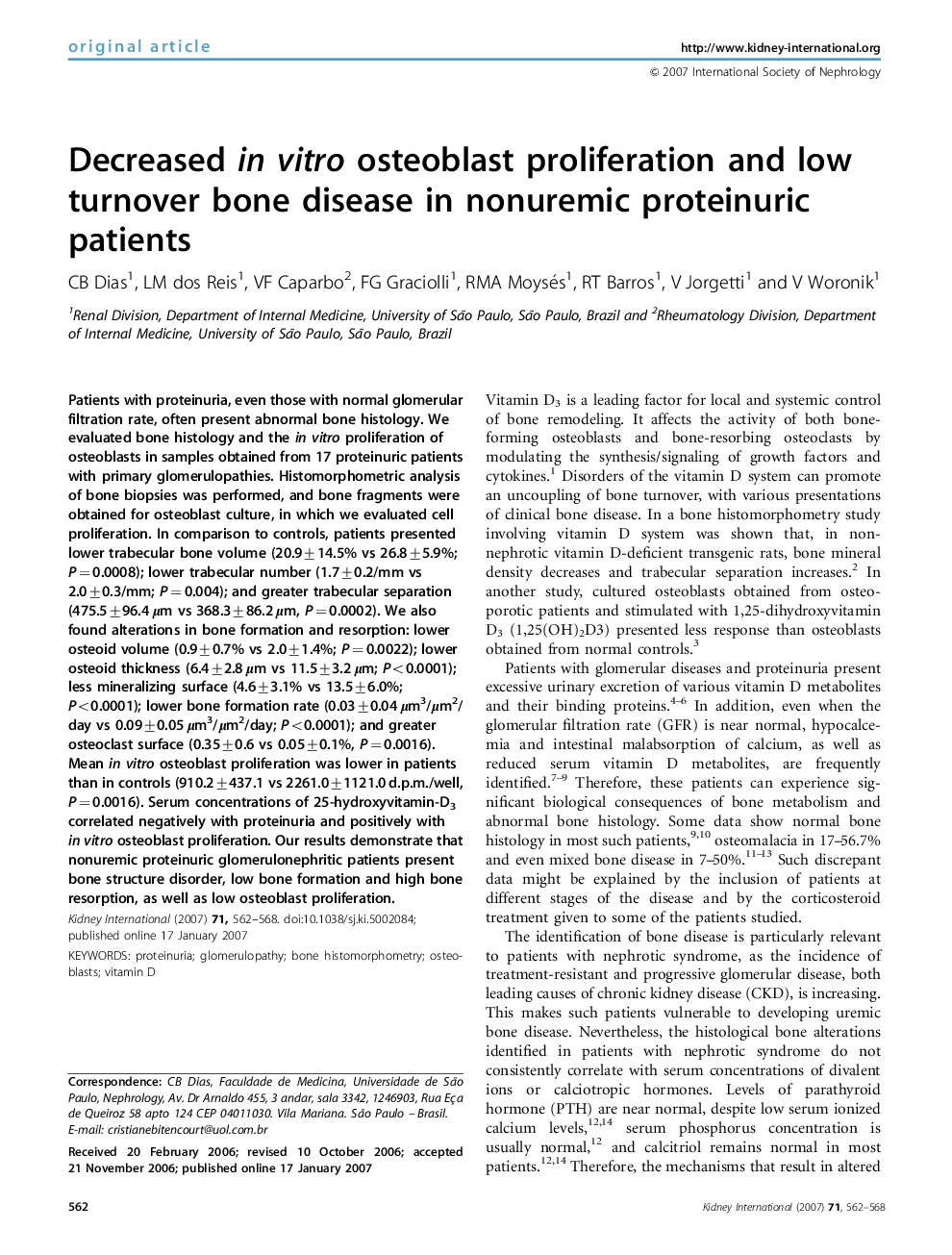| Article ID | Journal | Published Year | Pages | File Type |
|---|---|---|---|---|
| 3885829 | Kidney International | 2007 | 7 Pages |
Patients with proteinuria, even those with normal glomerular filtration rate, often present abnormal bone histology. We evaluated bone histology and the in vitro proliferation of osteoblasts in samples obtained from 17 proteinuric patients with primary glomerulopathies. Histomorphometric analysis of bone biopsies was performed, and bone fragments were obtained for osteoblast culture, in which we evaluated cell proliferation. In comparison to controls, patients presented lower trabecular bone volume (20.9±14.5% vs 26.8±5.9%; P=0.0008); lower trabecular number (1.7±0.2/mm vs 2.0±0.3/mm; P=0.004); and greater trabecular separation (475.5±96.4 μm vs 368.3±86.2 μm, P=0.0002). We also found alterations in bone formation and resorption: lower osteoid volume (0.9±0.7% vs 2.0±1.4%; P=0.0022); lower osteoid thickness (6.4±2.8 μm vs 11.5±3.2 μm; P<0.0001); less mineralizing surface (4.6±3.1% vs 13.5±6.0%; P<0.0001); lower bone formation rate (0.03±0.04 μm3/μm2/day vs 0.09±0.05 μm3/μm2/day; P<0.0001); and greater osteoclast surface (0.35±0.6 vs 0.05±0.1%, P=0.0016). Mean in vitro osteoblast proliferation was lower in patients than in controls (910.2±437.1 vs 2261.0±1121.0 d.p.m./well, P=0.0016). Serum concentrations of 25-hydroxyvitamin-D3 correlated negatively with proteinuria and positively with in vitro osteoblast proliferation. Our results demonstrate that nonuremic proteinuric glomerulonephritic patients present bone structure disorder, low bone formation and high bone resorption, as well as low osteoblast proliferation.
